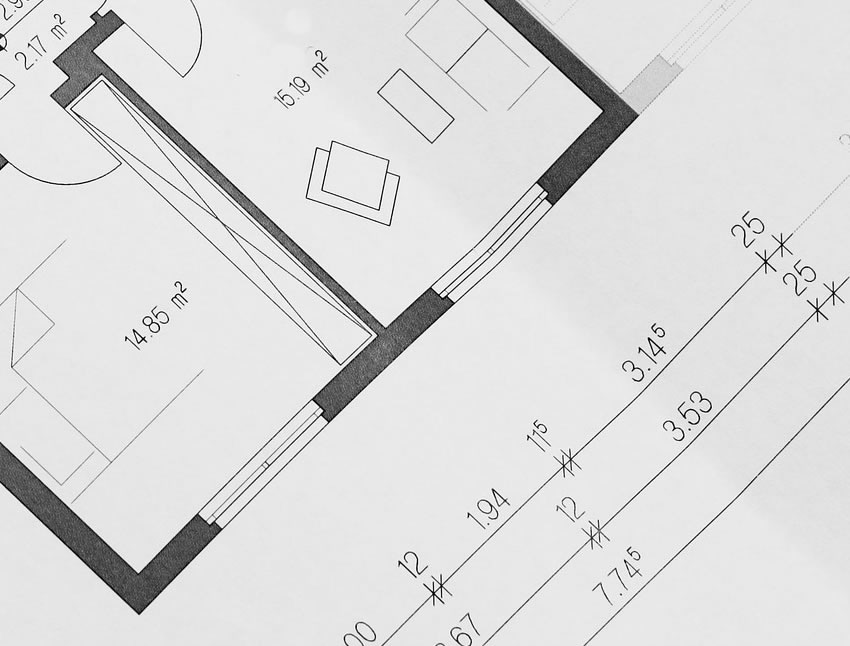To give you an idea of what to expect from us here at TW in terms in terms of the loft conversion process, we have drawn up a schedule of a typical conversion:
1. The roof space is inspected for suitability
An inspection of the inside of the roof space will provide information as to its suitability for conversion. The main features to initially consider include height, access and obstacles.
2. An architect or surveyor will confirm suitability & create plans
An architect or surveyor will confirm the loft’s suitability for conversion. It is also necessary to take into account whether the building will be adequate to take the added load of a conversion. Following this, plans are drawn which also provide a basis for cost analysis, and what tasks can be done on a DIY basis.
3. The loft is cleared & prepped
With Building Control approval, work can be started by clearing the loft space.
4. Rewiring is assessed
The electrical wiring and other services that are attached to joists and binders must be removed and rerouted. It provides a good opportunity to replace and improve the original wiring. This requirement is likely to mean that some services may not be available until the new wiring and any pipework can be replaced.
5. New floor joists fitted
The new floor joists can now be fitted. The actual sizes will depend upon the spans, but might typically be 50mm x 220mm C24 or C16 timbers spaced at 400mm intervals. Where there is a window or door opening below this is bridged by doubled-up timber suspended between doubled-up joists. The intermediate joists are attached to the window bridge using joist hangers. New wiring and any required pipework can now be installed.
6. Floors are insulated
The spaces between the joists are filled with insulation to a depth of 100mm. Following Building Control inspection, the joists can be covered with floorboards. The roofing struts and hangers are temporary but securely reinstalled until suitable replacement arrangements are in place.
7. Floorboards laid
The tongue-and-groove chipboard floorboards are held in place with screws. A water-resistant grade is a good choice, and essential in the bath or shower room.
8. Rafters reinforced
Work can now be started in rafter reinforcement in accordance with the structural requirements, so that the purlins, struts and collars can be safely removed. This will open up the area.
9. Dormers installed (if applicable)
Dormers can now be installed. This will involve opening up the roof, so dry weather is desirable to avoid the risk of water damage. The Building Control officer will inspect to ensure that the roof structure reinforcements are as specified.
10. Rooflights installed
Roof windows are an effective way of letting in natural light.
11. Staircase fitted
Every stair opening will be accessed for design and suitability and then a staircase will be formed according to your design and building regulations.
12. Dormers tiled vents & windows fitted
The dormers are tiled and clad to fully weatherproof them. Windows fitted in dormers

13. The roof is insulated
Insulation is placed between the rafters, with a 50mm air gap between the roofing felt and the insulation, for ventilation purposes. Over this is further insulation giving a total of 100mm. In the roof space above there is 300mm of mineral wool insulation. Building Control inspection is required before the rafters and insulation are covered.
14. Partition walls erected
The partition walls are erected. These use 47mm x 100mm timber studs at 400mm centres, with additional noggins. A quilt is placed within the spaces between the studs as the plasterboard is attached.
15. Wall plates & first fix
Wall plates fitted between studs will provide a secure fitting to items like radiators; they can also be used to secure the boxes required for electric sockets and switches. This is an ideal time to do the first fix electrics and plumbing.
16. Electrics upgraded
The new electrics must conform to Part ‘P’ of the Building Regulations and the 17th Edition Electrical Regulations. It may be necessary to fit a new consumer unit, or additional unit if the existing one has no extra capacity.
17. Access panels for water, electrics & eaves storage
Access panels are a useful addition. Here, water supplies and central heating feeds can be connected to the loft conversion. All metal pipework is earth-bonded together.
18. Walls are plasterboarded & architrave / skirting fitted
Plasterboard attached to the studs and rafters with drywall screws will provide the basis for the decorative plaster skim. Following this, the area is painted as required, and door architrave etc. fitted and painted.
19. Bathrooms clad & extraction fitted
The shower room walls are best clad with a cement-based aquaboard, first ensuring that all the required wall plates are fitted, and that all the required services are accessible. The shower room also requires an extractor fan.
20. Second fix, heating & finishes
With wall and floor tiling complete, the shower room items can be positioned and fitted. Second fix electrics and plumbing is progressed at a suitable time. The radiators are fitted in place, and connected to the central heating system.
21. Decorating
The space is now ready for decoration.
Loft Conversion Process: Redhill, Reigate, Dorking, Tunbridge Wells, Epsom & Beyond
Our loft conversion service extends from helping with design, Planning & building control right through to the completed project. The area we cover includes Surrey Sussex Kent inc. Redhill, Reigate, Dorking, Tunbridge Wells, Epsom & Beyond & beyond.

